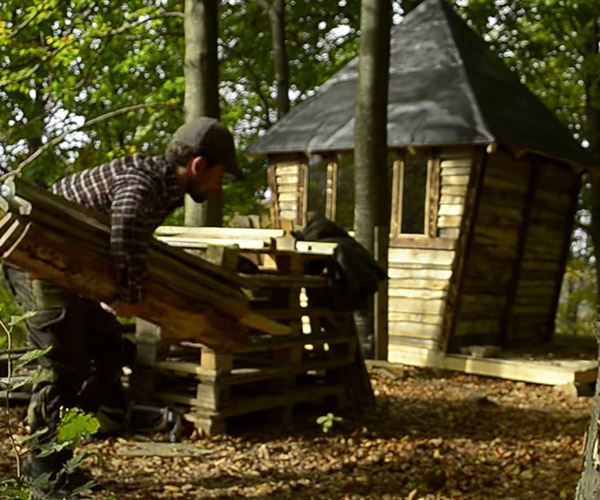https://s.w.org/images/core/emoji/12.0.0-1/72×72/1f33a.png
The media gets lots of stories wrong, but the Kyle Rittenhouse story (along with the Russiagate hoax, the “fine people” hoax, and the antifa/BLM “mostly peaceful riots” gaslight) is a story that the mainstream media got intentionally wrong to push a particular narrative. (If you haven’t read it already, this previously linked Bari Weiss piece on the trial is the go-to piece for covering media lies.) As the fallout from media lies continues,
Kyle Rittenhouse was found not guilty on all six charges today, already causing a great exploding of heads in the pundit-o-sphere. Unrest wouldn’t be surprising. How could it be otherwise? Colleagues in national media spent over a year telling the country the 18-year-old was not just guilty, but a moral monster whose acquittal would be an in-your-face affirmation of systemic white supremacy.
It used to bother me that journalists were portrayed in pop culture as sniveling, amoral weenies. Take William Atherton’s iconic portrayal in Die Hard of “Thornburg,” the TV-news creep who gasps, “Tell me you got that!” with orgasmic awe when an explosion rocks the Nakatomi building. I got that I’d seen that face on reporters.
But risking the life of hero John McClane’s wife Holly by putting her name on TV, and getting the info by threatening the family nanny Paulina with an immigration raid? We’re bad, I thought, but not that bad. I got that it was a movie, but my father was a local TV man, and that one stung a bit.
MSNBC Thursday pulled a Thornburg in real life. Police stopped a man named James Morrison who was apparently following a jury bus, and said he was acting at the direction of a New York-based MSNBC producer named Irene Byon. Even if all you’re after is a post-verdict interview, if a jury gets the slightest whiff that the press is searching out their names and addresses, that’s clear intimidation. People will worry about the safety of their spouses and children as they’re deliberating. Not that it matters to anyone but the defense, prosecution, judge, jury, and taxpayers, but you’re also putting the trial at risk. I’ve covered plenty of celebrity trials, from Michael Jackson to the Enron defendants, and know the identifying-jurors practice isn’t unheard of. However, in a powder-keg case like this, it’s bonkers to play it any way but straight.
We’ve seen Die Hard-level indifference to social consequence from the beginning of this case. The context of the Rittenhouse shootings involved a summer of protests that began after the police killing of George Floyd, and continued in Kenosha after the shooting of Jacob Blake. We saw demonstrations of all types last summer, ranging from solemn candlelight vigils and thousands of protesters laying peacefully on their backs across bridges, to the burning of storefronts and “hundreds” of car thieves stealing “nearly 80” cars from a dealership in San Leandro, California. When the population is on edge, and people are amped and ready to lash out, that puts an even greater onus on media figures to get things right.
In a tinderbox situation like this one, it was reckless beyond belief for analysts to tell audiences Rittenhouse was a murderer when many if not most of them had a good idea he would be acquitted. But that’s exactly what most outlets did.
This is separate and apart from the question of whether or not you like Kyle Rittenhouse, or agree with his politics, or if, as a parent, you would want your own teenager carrying an AR-15 into a chaotic protest zone. The huge media error here was of the “Walls are closing in” variety, except the context was far worse. The “Walls are closing in” stupidity raised vague expectations among #Resistance audiences that at some unfixed point in time, Donald Trump would be pushed from office by scandal. In this case, the same people who poured out onto the streets last summer were told over and over that Rittenhouse was guilty, setting the stage for shock and horror if and when the “wrong” verdict came back.
Media figures got every element of this story wrong. As documented by TK contributor Matt Orfalea, the Young Turks alone spat out all sorts of misconceptions with shocking inattention: that Rittenhouse was “shooting randomly at people” after falling down, that he’d fired first, that there was no evidence that anyone had raised a gun at him, among many, many other errors. Belatedly, the show conceded some of these problems…
Snip.
Joe Scarborough on MSNBC said Rittenhouse unloaded “about sixty rounds” into the crowd (it was eight), adding in another segment that he “drove across state lines and started shooting people up,” and in still another that he was “shooting wildly, running around acting like a rent a cop, trying to protect property in a town he doesn’t know.” (His father and other relatives live there). John Heilemann on the same channel said Rittenhouse was “arguably a domestic terrorist” who “crossed state lines to go and shoot people.” Bakari Sellers, CNN: “The only person who fired shots that night was Kyle Rittenhouse” (he didn’t fire first, and protesters actually fired more rounds).
In the early days after the shooting, there were widespread reports that Rittenhouse either was a “militia member” or “thought of himself as a militia member,” but these turned out to not be true (he was actually only a member of a Police Explorers program). A well-known politician, squad member Ayanna Pressley, whom I wouldn’t by any means characterize as stupid or generally careless, tweeted a slew of accusations paired with a challenge to media outlets to “fix your damn headlines”
This was followed by other politicians making similar comments. Congressman Ted Lieu in September of last year said Rittenhouse “drove across state lines and he murdered two protesters,” adding, “Americans of all colors and creeds are seeing that racism and white supremacy are problems we can’t ignore.” Stacy Abrams said Rittenhouse was “willing to drive across state lines in order to commit murder.” Of course, the crowning impropriety, already mentioned in this space, was then-candidate Joe Biden putting Rittenhouse in a campaign ad in which he talked about how Trump “refused to disavow white supremacists” in a debate…
Snip.
A scant few outlets bothered to do what The New Yorker did in July of this year, in examining each of these claims one by one. This involved simple things like citing the Anti-Defamation League report covering Rittenhouse:
Quote:
There is to date no evidence that Rittenhouse was involved with the Kenosha Guard or showed up as a result of their call to action. Nor is there evidence of ties to other extremist groups, either militia groups or white supremacist groups. Rittenhouse’s social media accounts provided no evidence of ties to extremism prior to the killings.The New Yorker also took a sober look at the oft-howled objection that Rittenhouse “crossed state lines,” as if this were somehow an offense in itself (see the Matt Orfalea video above) and quickly determined that news outlets simply didn’t bother to ask a few basic questions about the case:
Quote:
Because he lived in Illinois, people assumed that he had travelled some distance, for nefarious purposes, and had “crossed state lines” with his rifle. (The Rittenhouse apartment was a mile south of the Wisconsin border, and Rittenhouse had been storing his gun in Kenosha, at the house of a friend’s stepfather.)Because of all of these simple factual misconceptions that Rittenhouse was a militia member and a white supremacist who’d traveled a great distance to a town to which he had no connection, then fired first and indiscriminately analysts not only pre-judged Rittenhouse’s guilt, but offered advance explanations for any possible acquittal.
Since it was not possible that it was real self-defense, the trial could only be an affirmation of white supremacy’s hold on the judicial system. “I know what white people are willing to do to defend white supremacy,” is how Nation justice correspondent Elie Mystal put it, in a Democracy Now! appearance that casually explained some of Judge Schroeder’s decisions by saying things like, “That’s what racists do.” There’s simply no requirement anymore for substantiating words like “white supremacist” or “racist” in media. We were once terrified to use these words without a lot of backup, but now, we don’t distinguish between a person who attends Richard Spencer rallies and, say, a judge with a “God Bless The U.S.A.” ringtone, or a member of a Police Explorers program.
Pretty much any use of the phrase “white supremacy” in current political context indicates the one using it is pushing a radical left-wing social justice agenda.
— Declan Finn, author of badass action novels (@DeclanFinnBooks) November 21, 2021
One campaign, titled “CHARGED WITH BANK ROBBERY DURING GEORGE FLOYD RIOT,” has raised $140 of a $40,000 goal for a couple arrested in May last year.
“My girlfriend was released with no paper, but unfortunately they kept me and charged me with bank larceny,” the description reads, adding that the charges have since changed to “attempted bank robbery.”
Another titled “Fundraiser for Tuscon Arrestees” is soliciting donations for 12 people who face felony riot charges. The campaign has so far raised nearly $7,200 of a $12,000 goal.
The “Tia Pugh Legal Defense Fund” is raising money for a 22-year-old Alabama woman arrested for criminal mischief and inciting a riot. The fund has just fallen about $50 short of a $3,000 goal.
Rittenhouse, however, was unable to collect donations from the website because the then-17-year-old shooter was charged with a violent crime.
The Norfolk Virginia Police Department fired Sgt. William K. Kelly III for donating anonymously $25 to Kyle Rittenhouse’s defense.
The department only found out because a hacker group released the information of the anonymous users.
A jury found Rittenhouse not guilty on all counts.
Kelly wants his job back.
Jaleel Stallings was acquitted of multiple attempted murder charges related to him shooting at several St. Paul police officers last summer. He [reasonably] claimed self-defense and that he had no idea these guys were cops. https://t.co/8DPWDdRIut
— Amy Swearer (@AmySwearer) November 19, 2021
Timothy Simpkins, an 18-year-old who shot three people with an illegally possessed gun at a Texas high school, is literally out on bond right now and claiming he shot in self-defense. Honestly, he has a viable claim wrt to the intended target. https://t.co/A591OzmE36
— Amy Swearer (@AmySwearer) November 19, 2021
Trey Adams stabbed a high school classmate to death. Acquitted for? You guessed it – acting in self-defense. https://t.co/oFMlMvO9Et
— Amy Swearer (@AmySwearer) November 19, 2021
Tony Bristol, a nightclub security guard, was acquitted after claiming self-defense in the shooting deaths of two unarmed patrons. https://t.co/Zqd3Ek3F1A
— Amy Swearer (@AmySwearer) November 19, 2021
But wait, there’s more:
Naeem Davis. https://t.co/kXUdITzvg9
Alex Hughes. https://t.co/gFA5GvBFjq
Mychael Jenkins. https://t.co/JPyPqG1H23
James Nero. https://t.co/cfz5TIYr1S
Darreonta Reynolds. https://t.co/PxDqFIQPXS
— Amy Swearer (@AmySwearer) November 20, 2021
Marcus Weldon. https://t.co/tyCAHNwJEv
Tabias Davis. https://t.co/jFPTGZ0h2p
Rodney West. https://t.co/dbB3908I2R
Tyshawn Plowden, https://t.co/RxF0iazugR
Gabriel Chavez. https://t.co/dftxc6rQ9b
— Amy Swearer (@AmySwearer) November 20, 2021
How about some where charges were dropped before trial based on self-defense?
Joshua Walker. https://t.co/tKFGYt1a2c
Justin Golson. https://t.co/KPw25lfWxe
Ajay Alvarez. https://t.co/epVMiG584A
Sheyland Barnett. https://t.co/OIohuVWNGl
Michael Jones. https://t.co/OvApRU3eQm
— Amy Swearer (@AmySwearer) November 20, 2021
Hear me out. Cases of self-defense where a person of color *wasn’t even charged because it was so obvious*
[This guy has a go-fund-me FYI] https://t.co/eVz8I3KHru
From Omaha. https://t.co/ExRFBBvGb7
From Virginia [technically charged for like a day]. https://t.co/C0tK0eX8nq
— Amy Swearer (@AmySwearer) November 20, 2021
The jury got it right—finding Rittenhouse not guilty on all charges. The fact that charges were brought before any serious investigation is evidence that the government was motivated by politics, which itself should be considered criminal. pic.twitter.com/4pf8Ct3TkE
— Tulsi Gabbard
(@TulsiGabbard) November 20, 2021
I hope Kyle Rittenhouse lawsuits prompt media bankruptcies and house-cleaning of SJW radicals far and wide.
Lawrence Person’s BattleSwarm Blog


